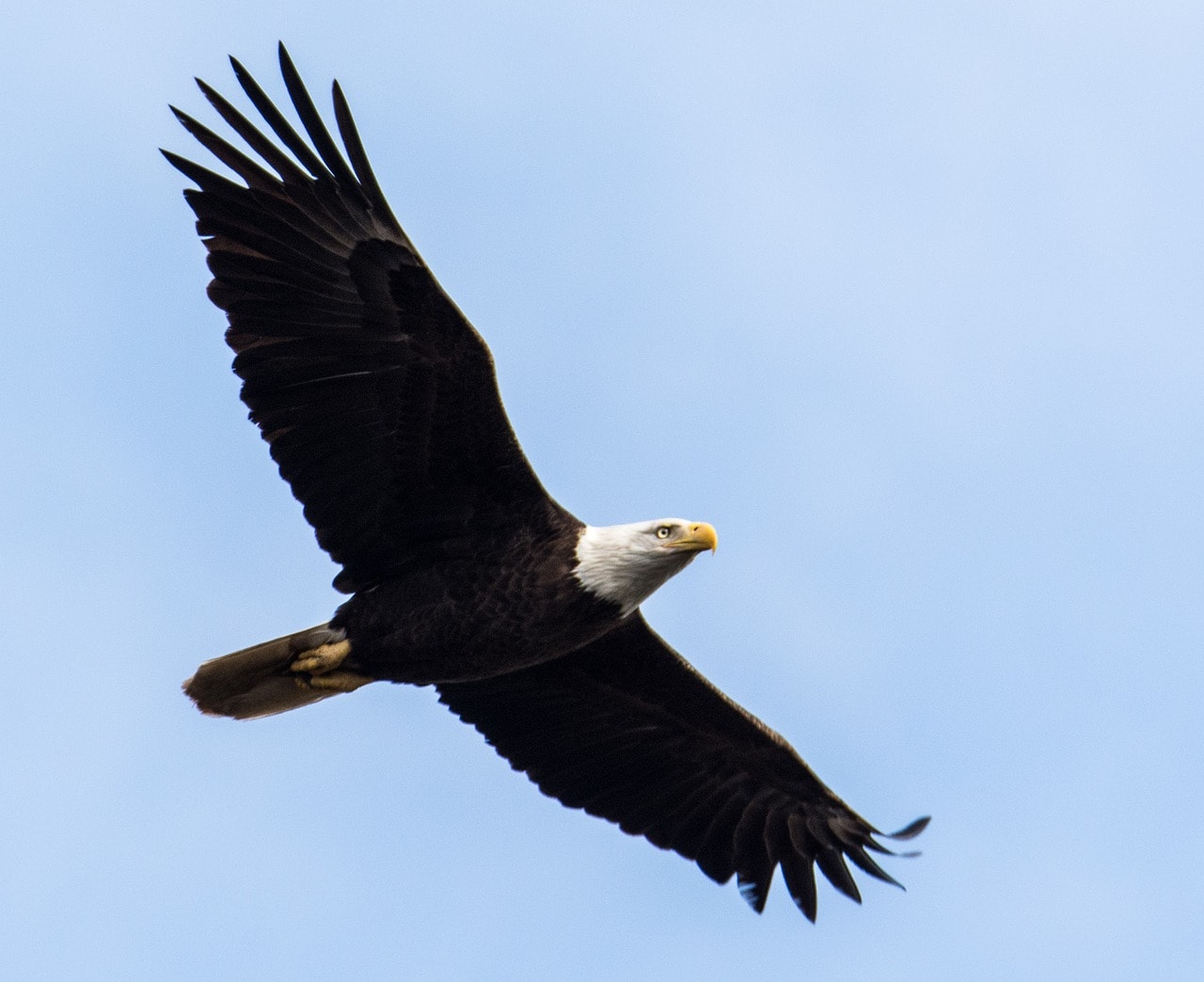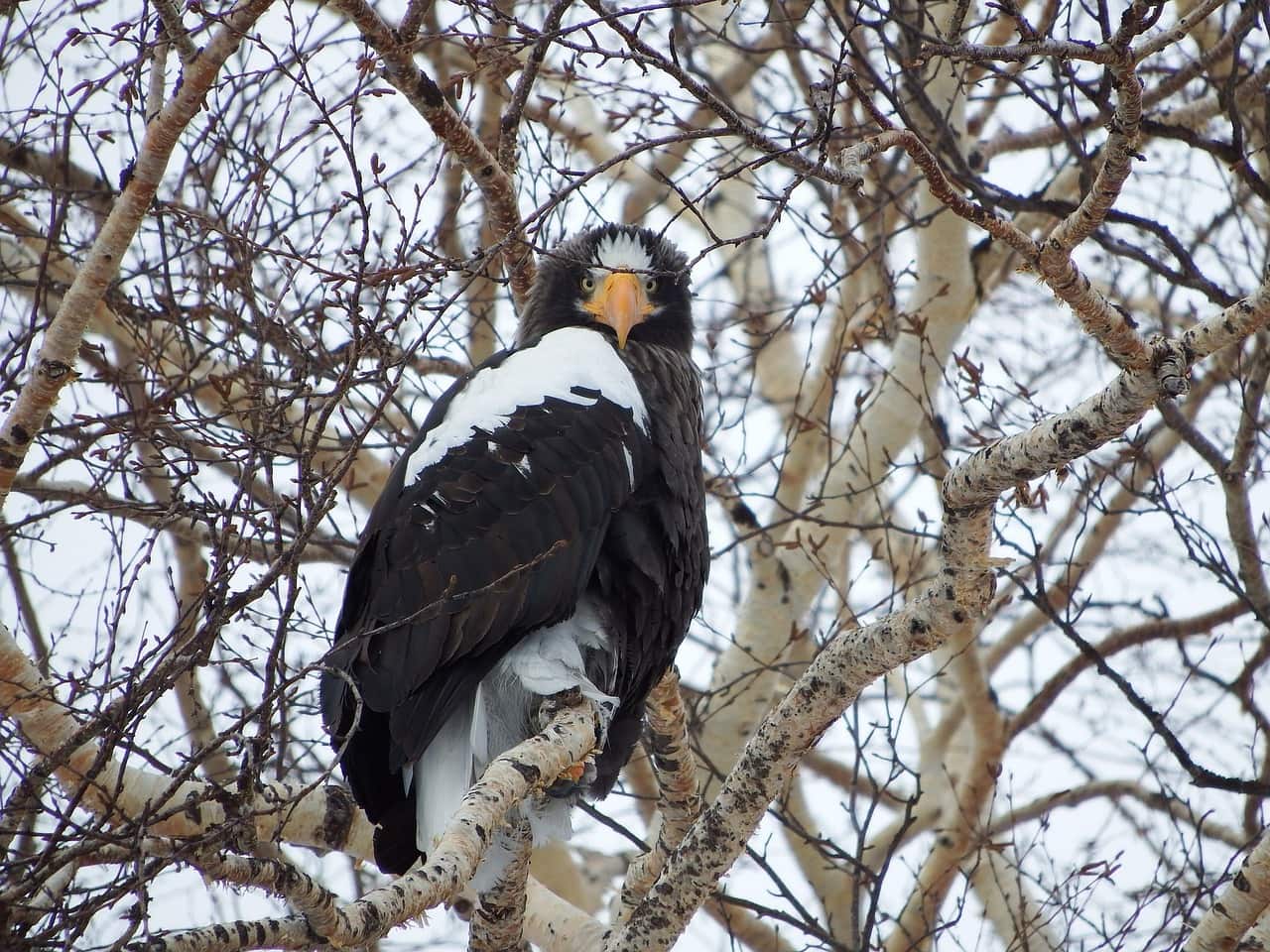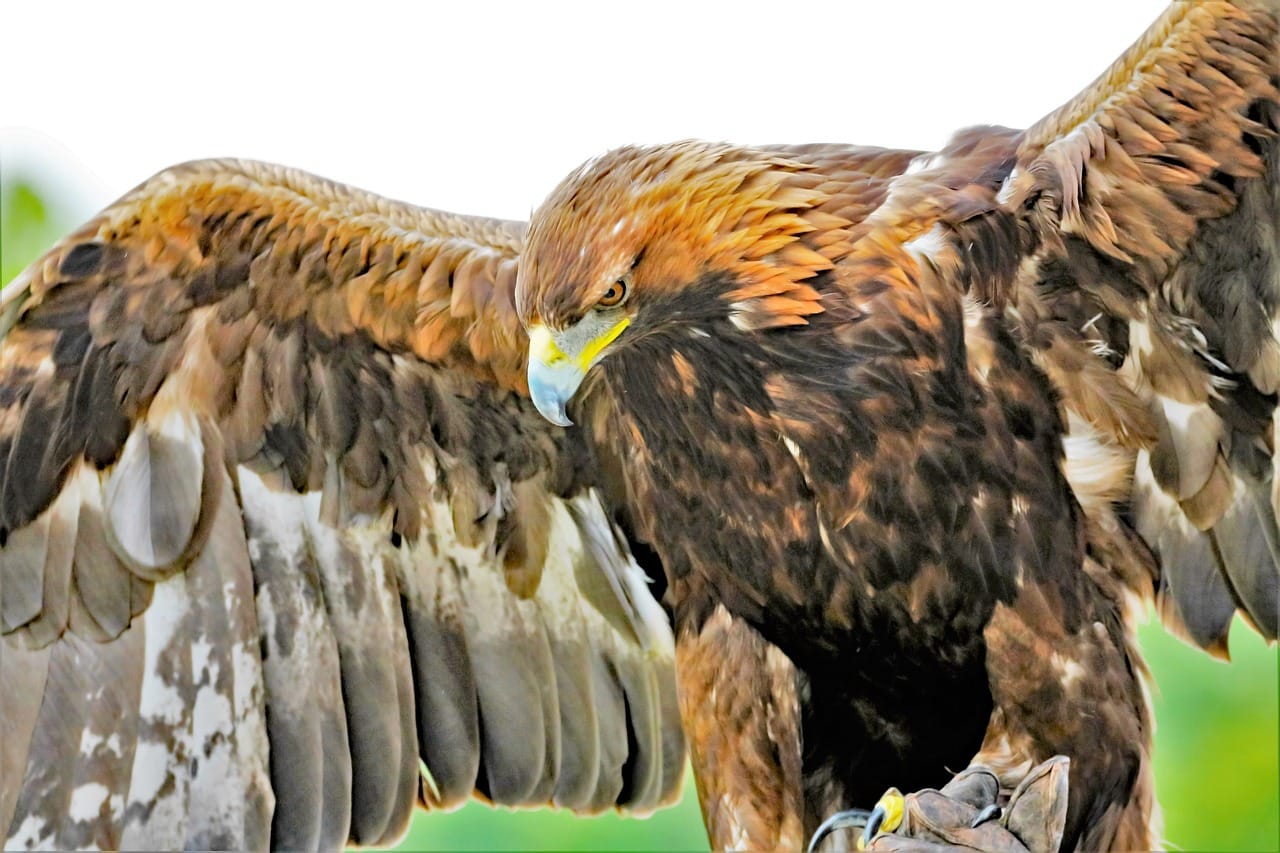4 Types of Eagle Species in the US
Last Updated on

Eagles are part of the taxonomic family Accipitridae. These species are related to other birds of prey or raptors, including hawks, falcons, and ospreys. They share several traits that convey these relationships, most notably, their large hooked beaks. It is the avian version of the specialized teeth that carnivores have, with a similar purpose.
Raptors use their beaks and talons to capture and rip apart their food to manageable sizes to ingest. Eagles differ in several ways from their counterparts, if just because of their massive size. They belong, in part, to the subfamily Buteoninae. Eagles from different locations in the world are classified into other subfamilies.
Our short roundup includes two rare species and two that are more well-known. The other documented birds occur in Africa, Asia, and Europe. Nevertheless, they share these same characteristics of a top predator wherever they reside.

The 4 Types of Eagle Species Found in the United States
1. White-tailed Eagle (Haliaeetus albicilla)

The White-tailed Eagle typically lives across the pond in Asia and Europe. This species only exists in the United States as an accidental. These are birds found outside of the usual range for a myriad of reasons. They are the type of bird that typically prompts an alert to serious birdwatchers to a sighting to add to their life checklists. Its numbers have been increasing in recent years.
The White-tailed Eagle has been spotted on the East Coast in Connecticut and Massachusetts. Birdwatchers have also recorded sightings in the Aleutian Islands and Alaska. That makes sense, given that it is a sea eagle that is widespread in Europe and Asia. They also live near freshwater lakes, feeding on fish and waterfowl. It is a massive bird, weighing over 20 lbs with a wingspan over 90 inches.
2. Steller’s Sea Eagle (Haliaeetus pelagicus)

Steller’s Sea Eagle is another enormous bird with a weight similar to the previous species and an even greater wingspan. They also inhabit Asia and Europe. The only time you may see one is an accidental sighting in the Aleutian Islands and Alaska. Despite its commanding presence, the Steller’s Sea Eagle is on the International Union for Conservation of Nature (IUCN)’s Red List of Threatened species.
The organization lists the bird as Vulnerable, meaning it is likely to become endangered without intervention. The IUCN estimates the population as less than 4,000. The Stellar’s Sea Eagle lives in various habitats, from wetlands to freshwater lakes to ocean coastlines. Its primary threats are from mining for the renewable energy and oil drilling industries.
3. Golden Eagle (Aquila chrysaetos)

The Golden Eagle is a majestic bird that commands your attention. It can get up to 40 inches high, with a wingspan of 71–91 inches. This raptor prefers the open country, where it will hunt a wide range of mammalian species, including prairie dogs, rabbits, and even the occasional fawn. These cliff-nesting birds mate for life.
The Golden Eagle lives year-round west of the Mississippi River. It sometimes crosses into the eastern half of the country during the winter or migration. There are both immature and mature coloration patterns that you often see in long-lived birds. The IUCN lists it as a species of least concern, with stable populations across its range into Eurasia.
4. Bald Eagle (Haliaeetus leucocephalus)

The Bald Eagle is living proof that conservation works. The species came back from the brink of extinction, due in large part to the 1972 ban on the pesticide DDT. Today, it is a species of least concern, with an increasing population across its range. It is found across the entire lower 48 and into Canada and Alaska.
The Bald Eagle is slightly larger than the Golden Eagle, reaching heights up to 43 inches and wingspans of 71–91 inches. Unlike the latter, this species prefers wetland habitats, coastlines, and lakes to hunt for its primary prey, fish. It isn’t a vocal bird, despite what you may hear on TV and in the movies. Its call is more of a yelping bark than the ominous shriek.
Conclusion
It’s an awe-inspiring moment when you spot an eagle in the wild. Their massive size and broad wingspan are enough to capture your attention. As we’ve seen with the Bald Eagle, they are also survivors. They have beaten the odds to come back in a vengeance. Future generations can continue to enjoy their beauty and marvel at their superior hunting skills.
Featured Image Credit: Dave Eslinger, Pixabay
About the Author Robert Sparks
Robert’s obsession with all things optical started early in life, when his optician father would bring home prototypes for Robert to play with. Nowadays, Robert is dedicated to helping others find the right optics for their needs. His hobbies include astronomy, astrophysics, and model building. Originally from Newark, NJ, he resides in Santa Fe, New Mexico, where the nighttime skies are filled with glittering stars.
Related Articles:
How to Clean a Refractor Telescope: Step-by-Step Guide
How to Clean a Telescope Eyepiece: Step-by-Step Guide
How to Clean a Rifle Scope: 8 Expert Tips
Monocular vs Telescope: Differences Explained (With Pictures)
What Is a Monocular Used For? 8 Common Functions
How to Clean a Telescope Mirror: 8 Expert Tips
Brightfield vs Phase Contrast Microscopy: The Differences Explained
SkyCamHD Drone Review: Pros, Cons, FAQ, & Verdict

